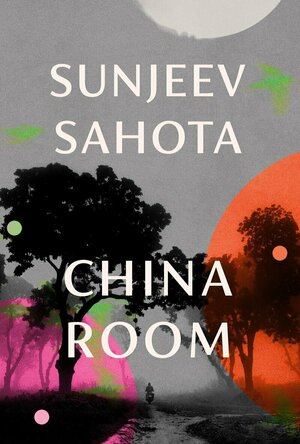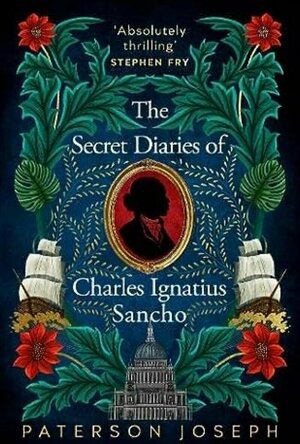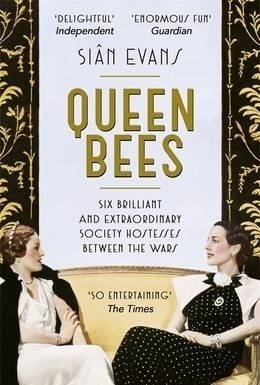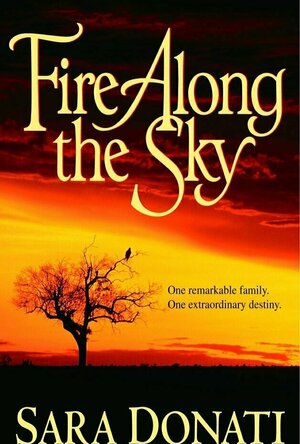
Fire Along the Sky (Wilderness #4)
Book
The year is 1812 and Hannah Bonner has returned to her family’s mountain cabin in Paradise. But...
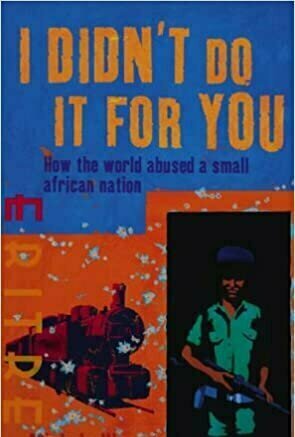
I Didn’t Do It for You: How the World Betrayed a Small African Nation
Book
One small East African country embodies the battered history of the continent: patronised by...
So Much Life Left Over
Book
A POWERFULLY EVOCATIVE AND EMOTIONALLY CHARGED NOVEL FROM THE ACCLAIMED AUTHOR OF CORELLI'S MANDOLIN...
Historical Fiction First World War Family Saga
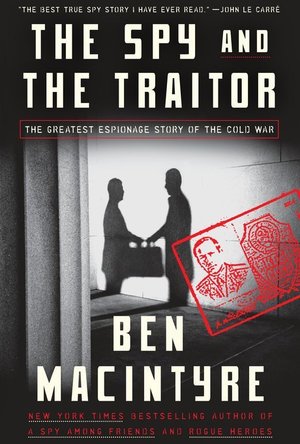
The Spy and the Traitor: The Greatest Espionage Story of the Cold War
Book
If anyone could be considered a Russian counterpart to the infamous British double-agent Kim Philby,...

Dark Voyage
Book
May 1941. At four in the morning, a rust-streaked tramp freighter steams up the Tagus River to...
ClareR (6001 KP) rated China Room in Books
Aug 13, 2021
He ends up staying on the abandoned family farm: a ramshackle building that needs a lot of work. One room is locked: the China Room. This is where his grandmother, Mehar, would have lived away from the prying eyes of men, working with the wives of the other two brothers to her husband. None of the women know who their husband is - they never see them in daylight. They cook and clean for them, and then have sex with them when their mother-in-law, Mai, allows. Their main function is to bear sons.
It’s a hard way of life, but the women accept their roles. As a 21st century women, living in the West, I found this very difficult to read. It’s an oppressive, claustrophobic life - even down to the veils that they had to wear when out in public which gave the impression of suffocation. I don’t know whether any of the girls actually looked another human in the face, other than each other and their mother-in-law.
But I found this timeline fascinating, and it was a huge contrast to that of Mehar’s grandson. It’s a compelling read - I read it in one sitting, and was a bit sad when I turned the last page, to leave the world of Mehar in particular.
Many thanks to Harvill Secker and Viking for my copy of this book to read and review.
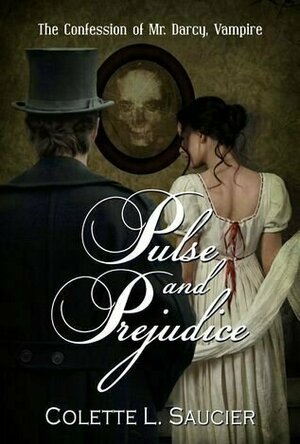
Pulse and Prejudice (The Confession of Mr. Darcy, Vampire #1)
Book
In this thrilling and sensual adaptation of the classic love story, Elizabeth Bennet and the...
Historical Paranormal Romance
ClareR (6001 KP) rated The Secret Diaries of Charles Ignatius Sancho in Books
May 7, 2024
This is the true story of Charles Ignatius Sancho, fictionalised somewhat, but only so that the modern day reader can begin to grasp what living in London as a black ex-slave in the mid-1700’s would have been like. And whilst Sancho may have had a more privileged life than most, it wasn’t his own life to live until he ran away from his first owners - sisters who used him as their entertainment.
Charles has a fear of the slave catcher, and rightly so, as they could kidnap any black person and sell them into slavery - whether they had escaped or been freed. These men were a constant threat.
Charles though, catches the eye of a duke who helps him to become educated, and he even works for the King for a while. He ends his life as a business owner and the first black person to vote in Britain. All of this from a life begun on a slave ship.
I don’t think it really matters how much of this book was fictionalised - we can never exactly know what went on in his head, but we can have a fair guess - and I like to think that Paterson Joseph has really caught the essence of the real Charles Ignatius Sancho. I liked Charles very much, and the love he shows for his son through the letters included in the novel are so touching.
I’d recommend this book, it’s a great read (or listen - I can definitely vouch for that!).
A spectacle of celebrity, talent and burning ambition, Queen Bees combines the biographical stories of six ambitious women who helped to shape the standards of British society between the two world wars. Londoner Siân Evans is a cultural historian who has previously worked with the Victoria and Albert Museum, National Trust and Design Museum, and takes great lengths to thoroughly research into her written subject in order to portray a highly accurate insight to the lives of historical figures. Due to the non-existent political status of women in the early 1900s, the women featured in this book are virtually unknown today, yet they had a great impact during the 20s and 30s and helped to shape the Britain of today.
Although not necessarily born into it, circumstances such as marriage meant these six women were regarded as upper class. In no particular order, the names impacting on the social revolution and thus featured in Queen Bees are as follows: Lady Nancy Astor, the first female MP; Lady Sybil Colefax, who became a friend of Edward VIII; Lady Emerald Cunard, also connected with the royal family; Mrs. Ronnie Greville, a rather formidable woman; Lady Edith Londonderry, the founder of the Women’s Legion; and Laura Corrigan, the youngest of the set. Evans talks the reader through these women’s careers as professional hostesses as they compete to throw the better party, entertaining famous writers and actors as well as members of royalty, both national and foreign.
What is perhaps the most interesting, and indeed the most worth learning, is the way a couple of these women altered the future of the British monarchy. Without their interference the future George VI would never have married Elizabeth Bowes-Lyon, and without their involvement in the relationship between Edward VIII and Wallis Simpson, George VI would never have come to the throne. This is such an important aspect of British history that has been widely left out and ignored. Without these hostesses influence we would all be experiencing a slightly different life.
In terms of the actual writing, Siân Evans manages fairly well to engage the reader as she relates the factual story in a more or less chronological way. A slight issue is the quick, often undetected, move from one woman to the next, resulting in a lot of confusion about who is who particularly at the beginning of the book. A lot of the narrative features other key figures from the same period and often moves away from the main characters, which, whilst interesting, is not what the reader necessarily expected from a book whose title Queen Bees suggested it was only going to be about the women’s lives.
Footnotes, quotes and extracts from letters and diaries help to make the book appear reliable, factual and believable. Some of the content, without back up, would have seemed rather fanciful or exaggerated. Queen Bees can be read as a source of entertainment or as a citation for historical research. What is found within these pages is a more unbiased account of the early twentieth century than would be found in numerous male dominated history textbooks.
Mature readers of all ages are likely to gain something from reading Queen Bees – pleasure, knowledge etc., however it is most likely to appeal to the contemporary feminist. With this in mind, be aware that the six hostesses were not feminists of their time; they were not involved in Suffragette movements and were fairly content to live off money earned by their husbands or fathers. Yet, on the other hand, they impacted on the future of Britain as much as the male politicians of the time. Highly political in content, Queen Bees is worth reading to discover our own history, but be prepared for initial confusion over who is who and rather lengthy paragraphs.
A spectacle of celebrity, talent and burning ambition, <i>Queen Bees</i> combines the biographical stories of six ambitious women who helped to shape the standards of British society between the two world wars. Londoner Siân Evans is a cultural historian who has previously worked with the <i>Victoria and Albert Museum, National Trust </i>and <i>Design Museum</i>, and takes great lengths to thoroughly research into her written subject in order to portray a highly accurate insight to the lives of historical figures. Due to the non-existent political status of women in the early 1900s, the women featured in this book are virtually unknown today, yet they had a great impact during the 20s and 30s and helped to shape the Britain of today.
Although not necessarily born into it, circumstances such as marriage meant these six women were regarded as upper class. In no particular order, the names impacting on the social revolution and thus featured in <i>Queen Bees</i> are as follows: Lady Nancy Astor, the first female MP; Lady Sybil Colefax, who became a friend of Edward VIII; Lady Emerald Cunard, also connected with the royal family; Mrs. Ronnie Greville, a rather formidable woman; Lady Edith Londonderry, the founder of the Women’s Legion; and Laura Corrigan, the youngest of the set. Evans talks the reader through these women’s careers as professional hostesses as they compete to throw the better party, entertaining famous writers and actors as well as members of royalty, both national and foreign.
What is perhaps the most interesting, and indeed the most worth learning, is the way a couple of these women altered the future of the British monarchy. Without their interference the future George VI would never have married Elizabeth Bowes-Lyon, and without their involvement in the relationship between Edward VIII and Wallis Simpson, George VI would never have come to the throne. This is such an important aspect of British history that has been widely left out and ignored. Without these hostesses influence we would all be experiencing a slightly different life.
In terms of the actual writing, Siân Evans manages fairly well to engage the reader as she relates the factual story in a more or less chronological way. A slight issue is the quick, often undetected, move from one woman to the next, resulting in a lot of confusion about who is who particularly at the beginning of the book. A lot of the narrative features other key figures from the same period and often moves away from the main characters, which, whilst interesting, is not what the reader necessarily expected from a book whose title <i>Queen Bees</i> suggested it was only going to be about the women’s lives.
Footnotes, quotes and extracts from letters and diaries help to make the book appear reliable, factual and believable. Some of the content, without back up, would have seemed rather fanciful or exaggerated. <i>Queen Bees</i> can be read as a source of entertainment or as a citation for historical research. What is found within these pages is a more unbiased account of the early twentieth century than would be found in numerous male dominated history textbooks.
Mature readers of all ages are likely to gain something from reading <i>Queen Bees</i> – pleasure, knowledge etc., however it is most likely to appeal to the contemporary feminist. With this in mind, be aware that the six hostesses were not feminists of their time; they were not involved in Suffragette movements and were fairly content to live off money earned by their husbands or fathers. Yet, on the other hand, they impacted on the future of Britain as much as the male politicians of the time. Highly political in content, <i>Queen Bees </i>is worth reading to discover our own history, but be prepared for initial confusion over who is who and rather lengthy paragraphs.

